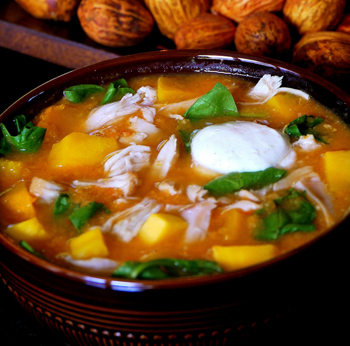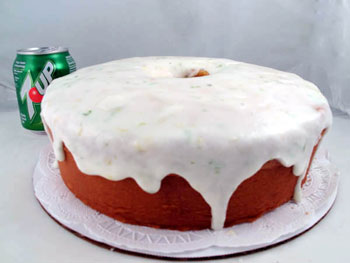 Years ago, when I was living on Beacon Street in Boston’s Back Bay, I was invited to a rooftop barbecue by my neighbor. Everyone was bringing something, so I thought a pound cake with fresh strawberries would be nice. It was a great party, and the host, who was raised in North Carolina, prepared an elaborate feast of primarily Southern Cuisine – ribs, chicken, baked beans, succotash, corn bread, etc.
Years ago, when I was living on Beacon Street in Boston’s Back Bay, I was invited to a rooftop barbecue by my neighbor. Everyone was bringing something, so I thought a pound cake with fresh strawberries would be nice. It was a great party, and the host, who was raised in North Carolina, prepared an elaborate feast of primarily Southern Cuisine – ribs, chicken, baked beans, succotash, corn bread, etc.
When it came time for dessert, everyone seemed to enjoy the pound cake and berries and I asked our host if he liked the cake. He said it was good and asked if I made it with 7UP. When I said that I had NOT, he replied, “then this is pound cake’s cousin – a real pound cake has 7UP in it!” When I saw this recipe in the Summer Entertaining issue of Cook’s Illustrated, I decided to try it. It’s a great buttery cake with a delicious lemon-lime flavor. I guess my neighbor knew what he was talking about!

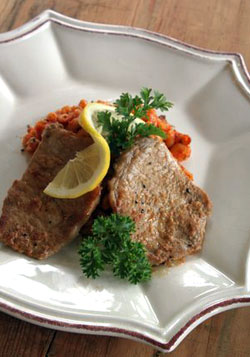 Technically defined as “thin cuts of meat, sautéed and cooked in a rich sauce,” the scaloppini fashion for cooking pork, chicken, and veal is simple and elegant. In the midst of my stew, soup and comfort food wintertime phase, I ere toward the side of something fresh and light in betwixt the heaviness comfort food affords. Enter my Skinny Pork Chop Scaloppini.
Technically defined as “thin cuts of meat, sautéed and cooked in a rich sauce,” the scaloppini fashion for cooking pork, chicken, and veal is simple and elegant. In the midst of my stew, soup and comfort food wintertime phase, I ere toward the side of something fresh and light in betwixt the heaviness comfort food affords. Enter my Skinny Pork Chop Scaloppini.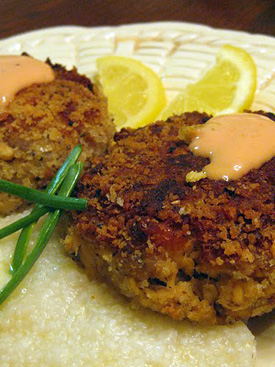
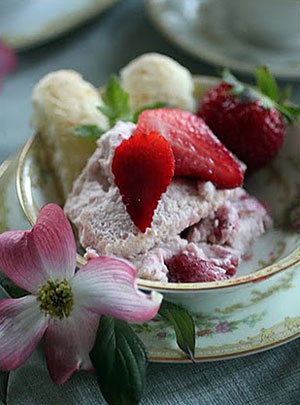 Leave it to my grandmother’s generation to have a delicious dessert with gelatin. A standby ingredient of the “greatest generation,” gelatin is often forgotten these days. Yet, this one ingredient provides a fantastic texture and appearance for dessert dishes. Strawberry Charlotte Russe is an “oldie but goodie,” for its name is derivative of Russian royalty and French culinary prowess.
Leave it to my grandmother’s generation to have a delicious dessert with gelatin. A standby ingredient of the “greatest generation,” gelatin is often forgotten these days. Yet, this one ingredient provides a fantastic texture and appearance for dessert dishes. Strawberry Charlotte Russe is an “oldie but goodie,” for its name is derivative of Russian royalty and French culinary prowess.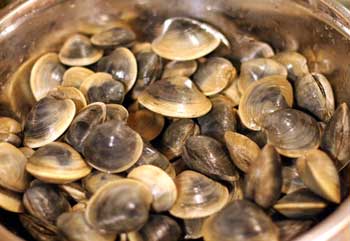 What a perfect time to declare it to be New England clam chowder week because the temperature here in Maine has been zero degrees at night and the wind has been a howling! Recipes for chowder are pretty personal around here. Some old salts would never use rendered bacon fat to sauté their onions in, they'd stop listening to you, roll their eyes and turn up their noses. Salt pork is how the old timers started chowder, period. Quahogs, not likely, either.
What a perfect time to declare it to be New England clam chowder week because the temperature here in Maine has been zero degrees at night and the wind has been a howling! Recipes for chowder are pretty personal around here. Some old salts would never use rendered bacon fat to sauté their onions in, they'd stop listening to you, roll their eyes and turn up their noses. Salt pork is how the old timers started chowder, period. Quahogs, not likely, either.
